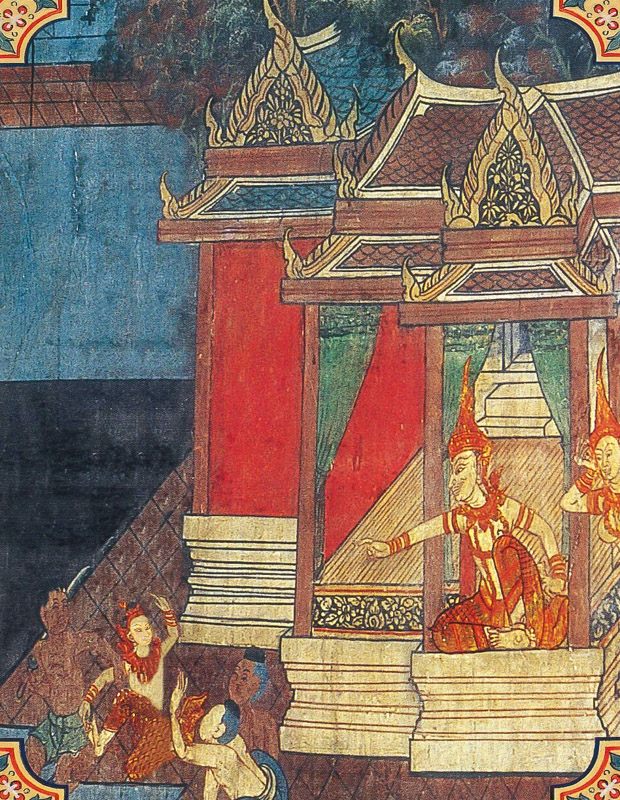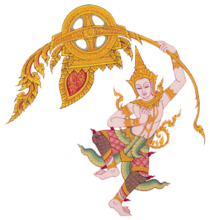
The Bodhisatta was once a prince. One day, when he was seven months old, his mother sat playing with him, and she was so joyful from motherly love that when the king entered her room, she forgot to rise in respect. His queen’s affection for their child enraged the jealous king. He returned to his throne and summoned the executioner, ordering him to seize the Bodhisatta.
The executioner ripped the Bodhisatta out of his mother’s arms and laid him on a board in front of the king, who ordered the boy’s hands chopped off. The weeping queen said she was the one who did wrong and begged the king to cut off her hands instead. But the king ignored her, and the executioner swung his axe. The Bodhisatta did not cry or react; full of perfect patience, he bore his pain with resignation. Ignoring desperate pleas from his horrified queen, the king then ordered the executioner to cut off the Bodhisatta’s feet and head, and chop his corpse into bits.
When it was over, the queen sat with the Bodhisatta’s flesh on her bloody lap. Overwhelmed by sorrow, her heart snapped like bamboo in a fire, and she died immediately. Then the ground under the king broke open and the flames of hell reached up and dragged him in.
In the Lifetime of the Buddha
The king was an earlier birth of Devadatta, a disciple of the Buddha who became his nemesis and tried unsuccessfully to kill him. But in earlier births, there were times when Devadatta did kill the Bodhisatta, including this story and the Khantivadi Jataka (#313).
One day the Buddha heard some of his disciples discussing Devadatta’s three assassination attempts: hiring archers, pushing a boulder into his path, and setting a fierce elephant loose. He told them this story so they knew that even though Devadatta had been successful in the past, he did not fear him now.
The queen was an earlier birth of the Buddha’s foster mother.
